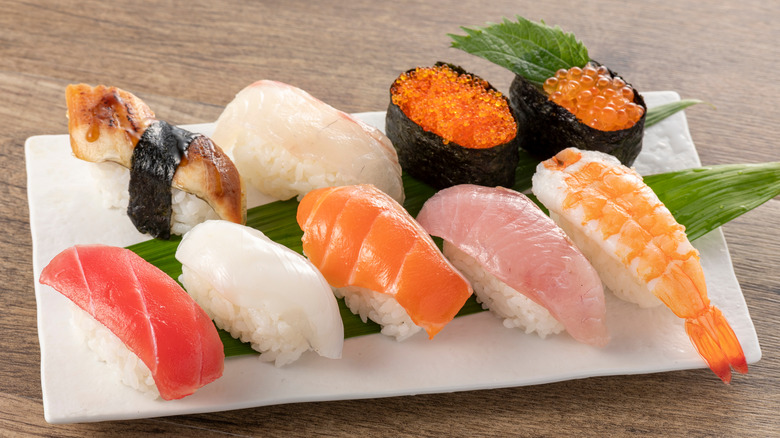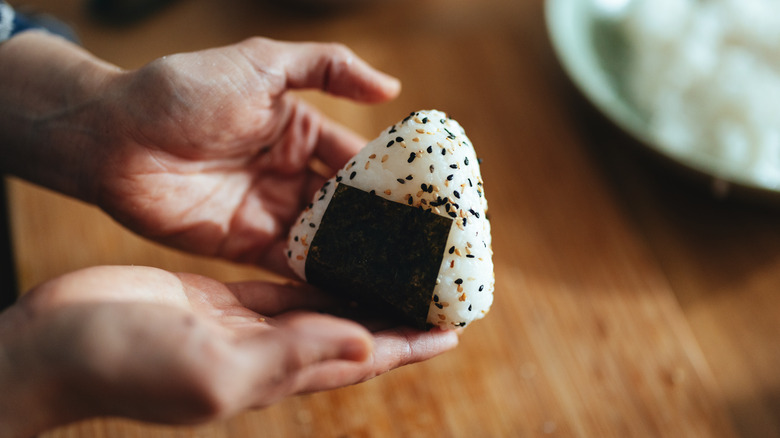What's The Difference Between Nigiri And Onigiri?
Those new to the world of Japanese cuisine can often feel a little overwhelmed by the many terms they have to learn, some of which are pretty similar. Among these are nigiri and onigiri. While there are some obvious similarities, there's a lot that sets the two foods apart, too.
Nigiri may be the style most familiar to Americans, as it's often listed as a category on the menu of sushi or Japanese restaurants. It's a style of sushi with origins as a Tokyo street food. Each piece includes a slice of fish or vegetable atop a small mound of prepared, seasoned sushi rice, sometimes with other flavorings like wasabi or chili. While it might look and sound simple, it's a deceivingly complex process that often requires extensive training to learn the proper rice-making and molding techniques.
It's generally eaten in a single bite, meaning most people have two or more in a single sitting, even if it's just a snack. Nigiri was traditionally eaten with your hands, though chopsticks are also common.
Similar names from a shared root
On the other hand, onigiri refers to a style of Japanese rice balls, often stuffed with various fillings like umeboshi (pickled, salted plum) and partially wrapped with nori seaweed that provides flavor and texture, as well as a convenient holder for handheld eating. Some preparations, like Mashed's easy onigiri recipe, also dip or sprinkle the exterior with sesame seeds or furikake, a mixture of dried fish, chopped seaweed, and other seasonings. Additionally, onigiri are larger, often about the size of a hockey puck. That means eaters can get several bites out of this more substantial item.
It's not an accident that these two related foods sound similar. They're both related to the Japanese word nigiru, which means "to grasp" or "to squeeze." This refers to the act of molding the rice, either for the bed on which the fish will rest or to create the form of the rice ball.
But despite their differences, both nigiri and onigiri are delicious and fundamental pieces of Japanese food. Now, you can be more confident enjoying whichever strikes your fancy the next time a craving comes for a treat from the Far East.

